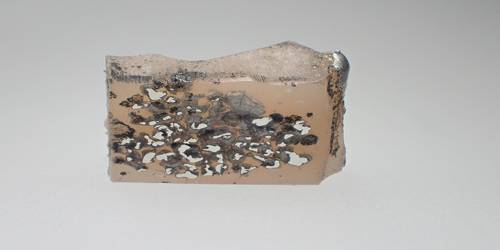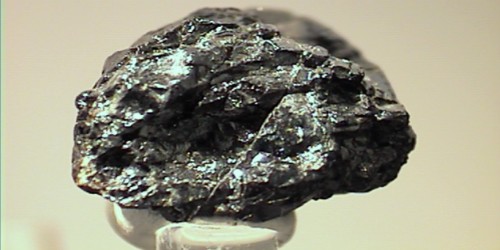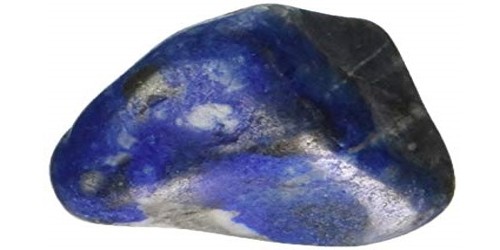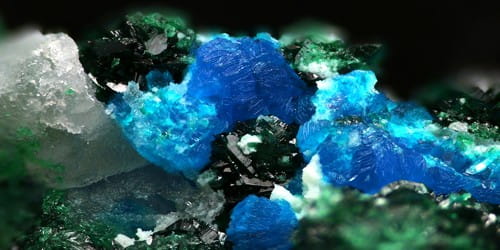Mogovidite is a very rare mineral of the eudialyte group, with formula Na9(Ca,Na)6Ca6(Fe3+,Fe2+)2 Zr3[]Si(Si9O27)2(Si3O9)2(CO3)(OH, H2O)4. It occurs in a nepheline-pectolite vein within ijolite. The formula given is based on the original one but extended to show the presence of cyclic silicate groups. This mineral belongs to Cyclosilicate.
General Information
- Category: Cyclosilicate
- Formula: Na9(Ca,Na)6Ca6(Fe3+,Fe2+)2Zr3[]Si(Si9O27)2(Si3O9)2(CO3)(OH,H2O)4
- Crystal system: Trigonal
- Crystal class: Hexagonal scalenohedral (3m)
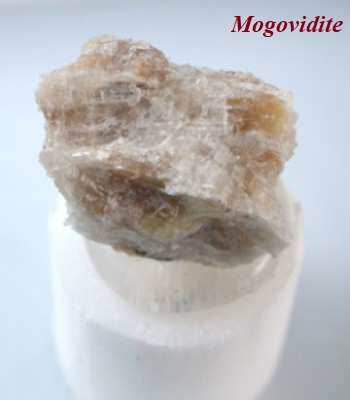
Properties
It is similar to feklichevite, differing from it in the presence of essential vacancies (at the M3 site) and the carbonate group. Another specific feature is the dominance of ferric iron – a feature shared with other eudialyte-group members, including feklichevite, fengchengite, golyshevite and ikranite. It has Mohs Hardness between 5.5. It has a molecular mass of 3,066.24 gm.
- Color: Brown to reddish-brown
- Crystal habit: grains and crystals
- Cleavage: No
- Tenacity: Brittle
- Density: 2.91 (measured)
- Optical properties: Uniaxial (-)
Occurrence and association
As golyshevite, mogovidite was discovered in calcium-bearing peralkaline pegmatites of the Kovdor massif, Kola Peninsula, Russia. The mineral name is of geographical origin – mogovidite is named after Mt. Mogo-Vid located in the vicinity of the type locality. Association of mogovidite: aegirine-augite, andradite, calcite, humite, nepheline, pectolite, scolecite, titanite, zircon.
Information Source:

